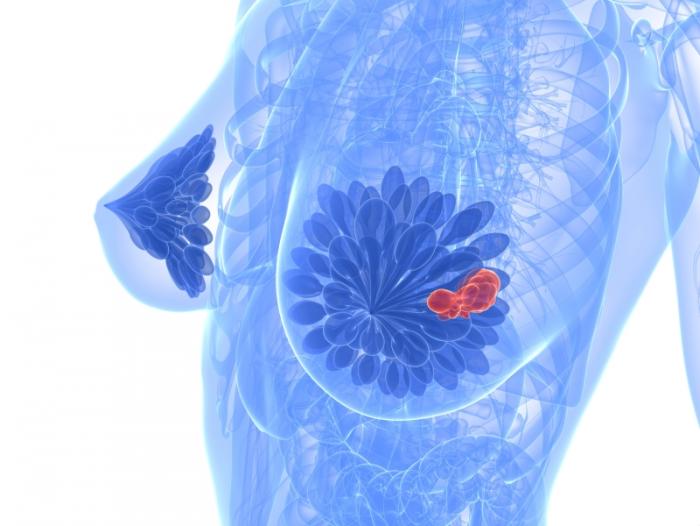#Breast Cancer #types #phyllode #ducts #lobules #Connective_tissue #Biopsy #mammogram #physical_exam #MRI #Ultrasound
Breast cancers called carcinomas, which develop inside the ducts (milk-carrying tubes) or lobules (milk-producing glands) of the breast, phyllodes tumors start outside of the ducts and lobules. Phyllodes tumors develop in the breast's connective tissue, called the stroma. The stroma includes the fatty tissue and ligaments that surround the ducts, lobules, and blood and lymph vessels in the breast. It may be helpful to think of the stroma as the tissue that "holds everything together" inside the breast. In addition to stromal cells, phyllodes tumors can also contain cells from the ducts and lobules.

The most common symptom of a phyllodes tumor is a breast lump that you or your doctor can feel while examining the breasts. Phyllodes tumors tend to grow quickly, within a period of weeks or months, to a size of 2-3 cm or sometimes larger. This rapid growth does not automatically mean the phyllodes tumor is malignant; benign tumors can grow quickly, too. The lump is usually not painful. If left unchecked, the lump can create a visible bulge as it pushes against the skin. In more advanced cases — whether benign, borderline, or malignant — a phyllodes tumor can cause an ulcer or open wound to form on the breast skin.
Breast cancers called carcinomas, which develop inside the ducts (milk-carrying tubes) or lobules (milk-producing glands) of the breast, phyllodes tumors start outside of the ducts and lobules. Phyllodes tumors develop in the breast's connective tissue, called the stroma. The stroma includes the fatty tissue and ligaments that surround the ducts, lobules, and blood and lymph vessels in the breast. It may be helpful to think of the stroma as the tissue that "holds everything together" inside the breast. In addition to stromal cells, phyllodes tumors can also contain cells from the ducts and lobules.

The most common symptom of a phyllodes tumor is a breast lump that you or your doctor can feel while examining the breasts. Phyllodes tumors tend to grow quickly, within a period of weeks or months, to a size of 2-3 cm or sometimes larger. This rapid growth does not automatically mean the phyllodes tumor is malignant; benign tumors can grow quickly, too. The lump is usually not painful. If left unchecked, the lump can create a visible bulge as it pushes against the skin. In more advanced cases — whether benign, borderline, or malignant — a phyllodes tumor can cause an ulcer or open wound to form on the breast skin.











 because it hasn’t spread beyond the milk duct into any normal surrounding breast tissue. DCIS isn’t life-threatening, but having DCIS can increase the risk of developing an invasive breast cancer later on.
because it hasn’t spread beyond the milk duct into any normal surrounding breast tissue. DCIS isn’t life-threatening, but having DCIS can increase the risk of developing an invasive breast cancer later on.





